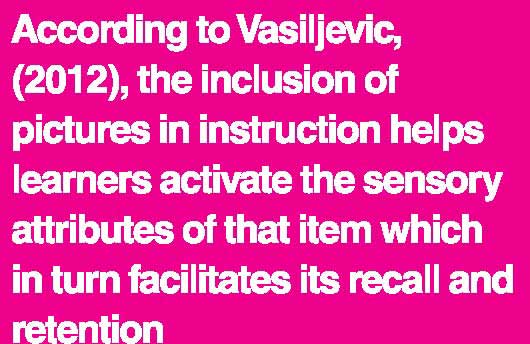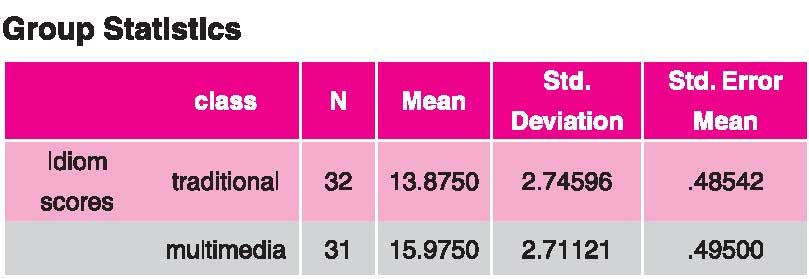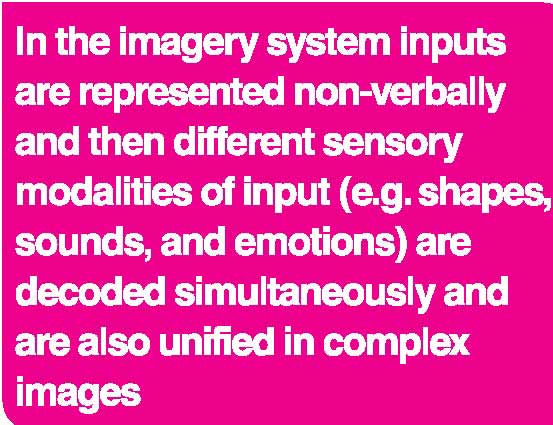Guidlines
for Publishing in Action Research
Coordinator:
Mehdi B. Mehrani
We have
recently specified a special column in Roshd FLT Journal for publishing
small-scale research studies that teachers conduct in their own classes. We
intend to publish at least one action research report in each issue of Roshd
FLT Journal. Thus, we encourage you to submit the reports of your classroom
research to be published in our “Action Research Column”.
We
accept papers on the basis of their relevancy to our readers, simplicity,
readability, and freshness of viewpoint. Your papers do not have to follow the
standards of scholarly, academic research papers. We do not use complicated
statistical analyses, technical terms or footnotes. Thus, write in a simple,
plain and easy to understand manner. Please cite all of your sources within the
text, and provide a list of references at the end of your article. When writing
your paper, please include the following information in your report:
• Your
research questions and your plan for answering the research questions
• The
actions that you did over a period of time in order to answer the questions
• Your
evaluation of the effects of the actions and any evidence that support your evaluation
• Your
conclusion and suggestions for other teachers
To be
accepted for publication, your articles need to:
• Be
maximum 2500 words, including references
• Be on
a topic of relevance or interest to Iranian language teachers
•
Include an abstract of no more than 200 words, and a list of references
We are
looking forward to your action research reports. Should you have any inquiries
about how to prepare a report of your action research, you can send an email to
Dr. Mehrani at the following address: meh.mehrani@gmail.com
Integrating
Multimedia in Idioms Class and Its Impact on EFL Students' Achievement
Abstract
The
current study aimed to investigate the use of multimedia in language classrooms
and its impact on EFL students’ achievement. To this end the researcher
observed the performance of two groups, the first of which was taught new
idioms according to the traditional method of teaching vocabulary and the
latter was taught using multimedia in a language lab. The results of the final
exam demonstrated the positive impact of integrating multimedia on idioms
learning. This, in turn, substantiates the importance of integrating new
technologies in education in general and language teaching in particular.
Introduction
Due to
idioms' frequent use in everyday language use, they have recently received a
great deal of attention from a pedagogical point of view. Because of the
arbitrary nature of idioms, they are considered as one of the problematic and
challenging areas in learning a language. According to Gibbs (1992), a clear
understanding of idioms help learners to understand the meaning of metaphorical
and lexical texts better. A proficient second language learner, must know at least
several thousand idioms (Boers, Demecheleer & Eyckmans, 2004). Cooper
(1999) stated, “Indeed, mastery of an L2 may depend in part on how well
learners comprehend initially and produce eventually the idioms encountered in
everyday language”
(p. 234). Due to the importance of learning idioms in L2 vocabulary acquisition
there is a necessity to conduct research in this domain. In recent years, many
researchers have examined the effect of multimedia materials on second language
acquisition (Fernando, 1996 as cited in Golaghaei & Kakolian, 2015). In
this study, the researchers report on the result of an action research which
was conducted in an idiom focused course at university of Zanjan. To this aim
two classes were included. In one of them idioms were taught based on the
traditional method of vocabulary teaching and in the second class the idioms
were taught using multimedia in a lab. In the end, the results of the two
classes on the final exam were compared to find out which class performed
better.

Planning
This
study was conducted in two idiom-focused classes at the University of Zanjan.
In each class, there were about thirty male and female students with the mean
age of 21. The participants of this study were BA English translation students.
Eight instructional sessions were conducted in each class. In both classes the
English Idioms in Use was taught.
For the
first group, (i.e. control) the idioms were taught in the traditional method by
the instructor while in the other class the same idioms were presented through
pictorials, power points and videos. In each session, the instructor carefully
selected pictures and videos from the internet or prepared a power point to
teach the new idioms to the learners. At the end of the nine week instruction,
the final exam was administered to find out the impact of including multimedia
in teaching new language items.
Action
In this
study, the participants were 62 BA English translation students of University
of Zanjan. Among them, there were both males and females. As far as they all
had passed the Konkour (University Entrance Exam) and they were at the same
level (BA) no pretest was conducted. These students were randomly divided into
two classes by university procedures. The instructor of both classes was one of
the researchers who run eight instructional sessions in one semester. The
textbook of both classes was English Idioms in Use. In the control group, the classes were
conducted in usual classrooms with whiteboard. The idioms in this group were
taught by the instructor based on traditional method. In each session, the
instructor covered one unit of the textbook and taught the idioms by explaining
them or even providing students with the Persian equivalent of the idioms. In
the other group, the sessions were conducted in the language laboratory. In the
language laboratory of university of Zanjan, each student is provided with a
monitor and a headphone. For each session and each idiom of the textbook, some
power points and videos were provided. In these power points, the meaning of
idioms was illustrated and in most cases there was no need for verbal
explanation to be provided by the instructor; through the videos the students
could learn how to use them in real contexts. All the eight instructional
sessions were conducted in this way. In the end, the final idiom exam was given
to both groups. This exam was developed by the researchers based on the idioms
which had been taught to both groups.
Observation
In order
to find out which method was successful for teaching idioms, the same final
exam was administered to both groups. The following table shows the
participants' mean scores on the idiom exam after one semester instruction. As
the table shows, 32 students were in the traditional group and 30 students were
in the multimedia group. The mean score of students in the traditional group on
the idiom final exam was 13.87 while the mean score of the students in the
multimedia group on the idiom final exam, was 15.97. This shows the average
score of the students in the multimedia class was 2.1 score higher than the
ones in the traditional group and therefor had better performance on the final
exam. Based on the scores of the two groups and their comparison it can be
concluded that the multimedia had an effect on teaching idioms. In order to
find out the significant effect of multimedia an independent sample t-test was
conducted. The ρ value of the independent test was .004. When the ρ value is
smaller than .05 it can be concluded that the treatment and in this case use of
multimedia in teaching idioms was significantly effective.

Reflection
The
objective of this study was to investigate the effect of using multimedia for
teaching idioms. As the results of the study showed, the students who were
taught idioms through multimedia had better performance in comparison with
those who were taught idioms traditionally. It is worth mentioning that in this
study and for the treatment group some power points, pictures and videos were
used as multimedia to teach idioms to learners. According to Vasiljevic,
(2012), the inclusion of pictures in instruction helps learners activate the
sensory attributes of that item which in turn facilitates its recall and
retention. As Clark and Paivio (1991) put it, through visual illustration, the
imagery system is activated and then the input and materials are understood
faster and better. In the imagery system inputs are represented non-verbally
and then different sensory modalities of input (e.g. shapes, sounds, and
emotions) are decoded simultaneously and are also unified in complex images.
These compound images help learners to retrieve and remember the input in a
more complete manner (Vasiljevic, 2012). The method used in this study was
visualizing the idioms for students to help them remember and recall idioms
better. As it can be inferred from the results here, this method was successful
and scores of learners in the treatment group was higher than the ones in the
control group. On the whole it can be said that using pictures/videos and non-verbal
input could be very effective in the process of language learning. Further
studies can be undertaken to explore the effect of multimedia on other aspects
of language by other teachers. Teachers can also investigate the students’
feedback in their classes to see if it leads to similar or different outputs.

References
Boers, F., Demecheleer, M., & Eyckmans, J.
(2004). Etymological elaboration as a strategy for learning idioms. In
P.Bogaards and B. Laufer (Eds.), Vocabulary in a second language: Selection,
acquisition and testing (pp.53-78). Amsterdam and Philadelphia: John Benjamins.
Clark, J., & Paivio, A. (1991). Dual coding
theory and education. Educational Psychology Review, 71, 64-73.
Cooper, T. (1999). Processing of idioms by L2
learners of English. TESOL Quarterly 33, 233-62.
Gibbs, R.W. (1992). What do idioms really mean?
Journal of Memory and language, Retrieved, from
http://www.gse.uci.edu/ed168/resume.
Golaghaei.N, & Kakolian.S. (2015). The
effect of visual and etymological treatments on learning decomposable idioms
among EFL learners. International Journal of Applied Linguistics & English
Literature. 4(5), 72-81
Vasiljevic.V. (2012). Teaching Idioms through
Pictorial Elucidation. The Journal of Asia TEFL. 9. 3, pp. 75-105.